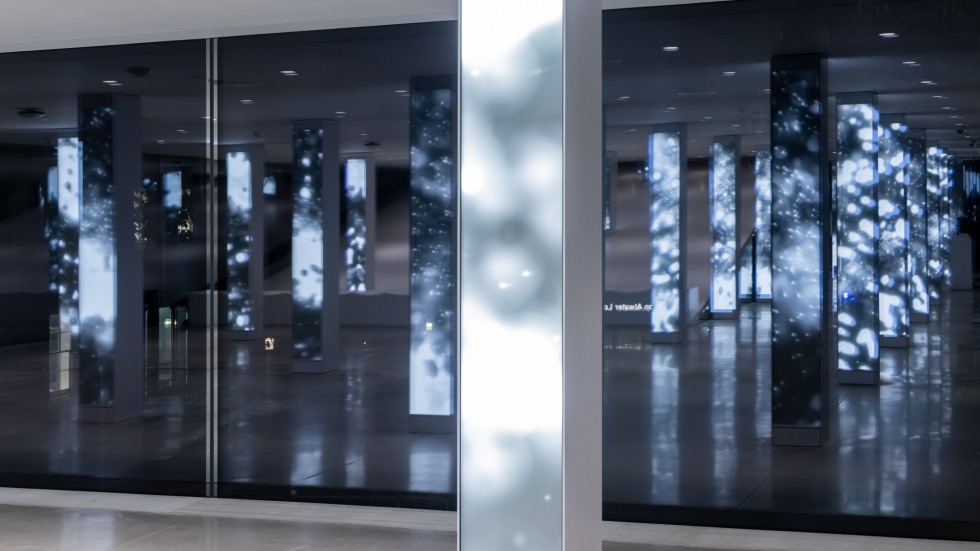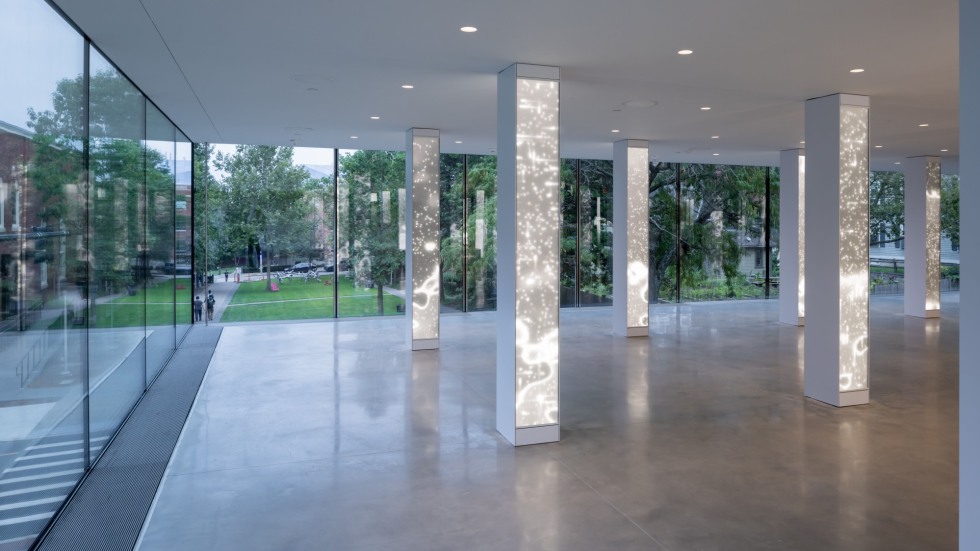Leo Villareal | Infinite Composition
Leo Villareal’s Infinite Composition (2023) reimagines the Lindemann Lobby as a dynamic nexus of light, technology, and human interaction.
Leo Villareal | Infinite Composition
Leo Villareal’s Infinite Composition (2023) reimagines the Lindemann Lobby as a dynamic nexus of light, technology, and human interaction.
%207524.jpg)
Leo Villareal
Infinite Composition, 2023
LEDs, glass diffusers, powder coated aluminum, control electronics, custom software, and column
Funded through the generosity of the Ansin Foundation in honor of Andrew ’85 and Tatsiana Ansin, Edmund and Toby Ansin P’85, P’88, P’94, James Ansin ’88, Stephanie Ansin ’94, and Spencer Stewart
Leo Villareal’s Infinite Composition (2023) reimagines the Lindemann Lobby as a dynamic nexus of light, technology, and human interaction. Composed of a towering series of 58 LED light pillars, the installation pulses with algorithmic sequences that Villareal programs to evoke organic rhythms—swirling galaxies, bioluminescent tides, or the synchronized dance of fireflies. These ever-evolving patterns, generated by custom software, transform the lobby into a living canvas of infinite variation. By harmonizing with Lindemann's modernist design, Infinite Composition transcends its role as a mere passageway, inviting visitors to linger in a space where architecture and art converge.
The work embodies Villareal’s exploration of generative systems, where code becomes a medium for imitating natural phenomena. Interplay between the digital and the organic demonstrates Brown University’s commitment to interdisciplinary innovation, bridging art, computer science, and environmental studies. “Artists always talk about wanting to break down barriers and bring communities together with their work, and to see that happen in real time is always thrilling,” Villareal said. “Public art is powerful because it’s accessible to everyone, which means it can create a sense of identity in a community.” The piece exemplifies how light can redefine spatial experience, fostering both introspection and collective engagement. Students and scholars have drawn parallels between the installation’s fluid patterns and research in emergent behavior, data visualization, and ecological systems.
Commissioned by the Brown Arts Institute’s Public Art Program, Infinite Composition has become a cornerstone of campus life since its debut. Villareal describes the work as “a dialogue with time and space,” reflecting its responsiveness to the lobby’s social and sensory rhythms. Since its opening in 2023, the installation has inspired classroom projects, tech-driven collaborations, and community gatherings across campus, solidifying its status as both an artistic landmark and academic inspiration. More than a visual spectacle, Infinite Composition embodies Brown’s vision of art as a dynamic force for connection, curiosity, and intellectual discovery.

Photo by Iwan Baan

Photo by Iwan Baan